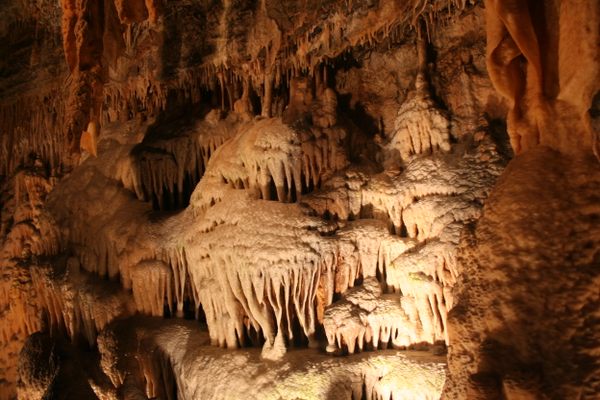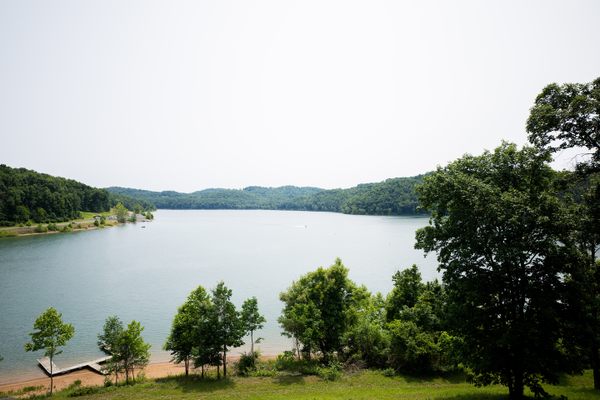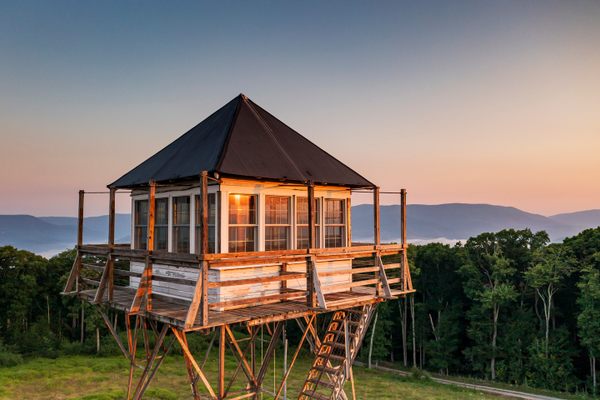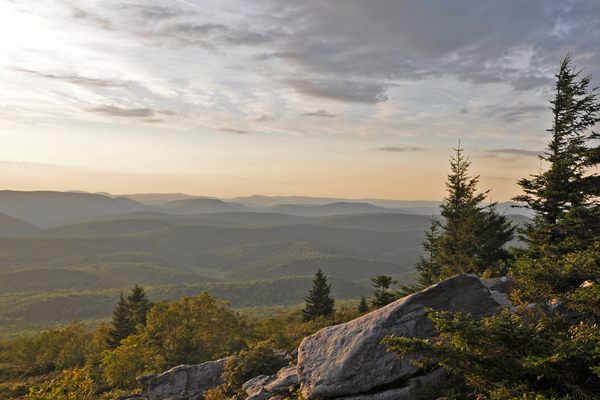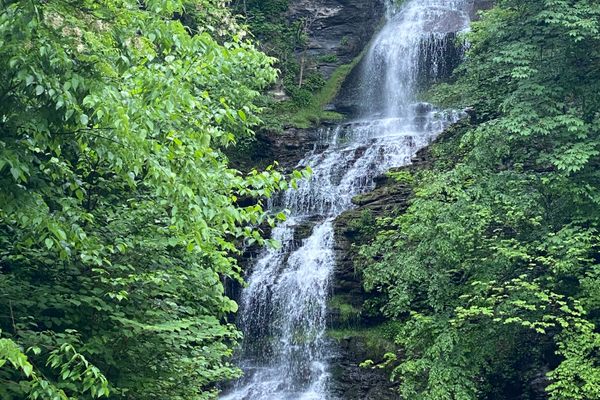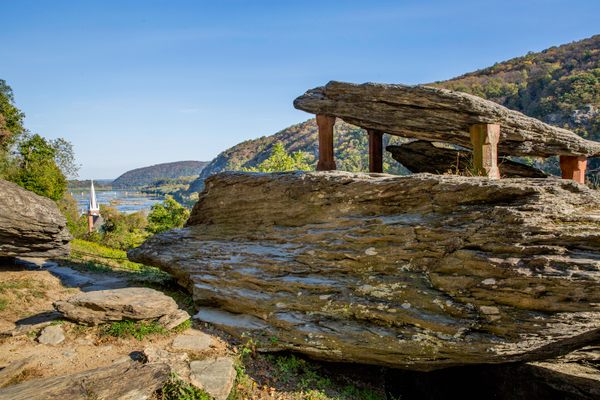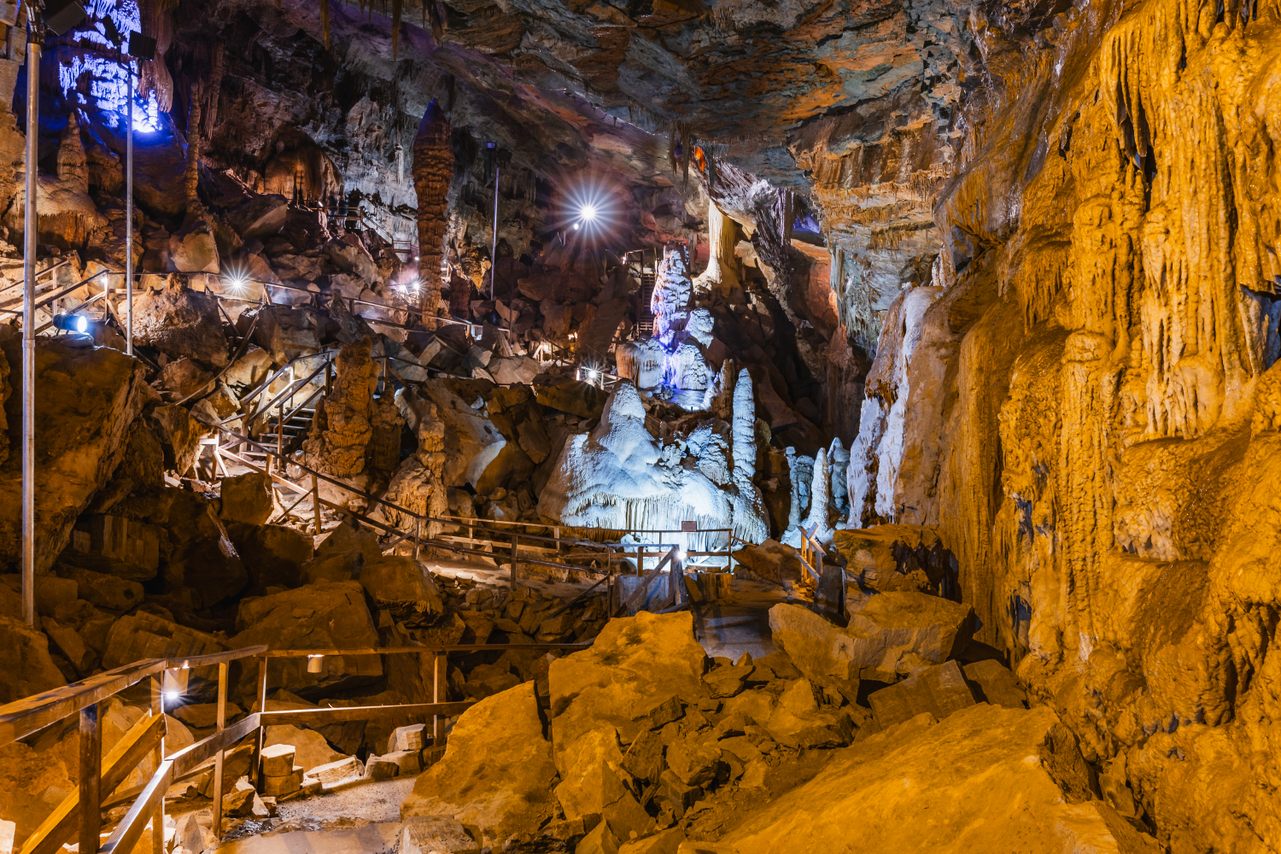
1. Lost World Caverns
Deep below Lewisburg lies an otherworldly labyrinth of underground spectacles. Lost World Caverns spans the length of nearly three football fields, unveiling a world of impressive underground structures. Showstoppers include the 30-ton “Snowy Chandelier” and a cascading column of calcite known as “Bridal Veil.” These caverns also served as the site of a quirky world record. In 1971, a former cave manager sat atop the 26-foot high “War Club” stalagmite for roughly two weeks, which landed him a spot in the Guinness Book. Be sure you pack your jacket—the cave stays a cool 52 degrees year round.
907 Lost World Road, Lewisburg, West Virginia 24901
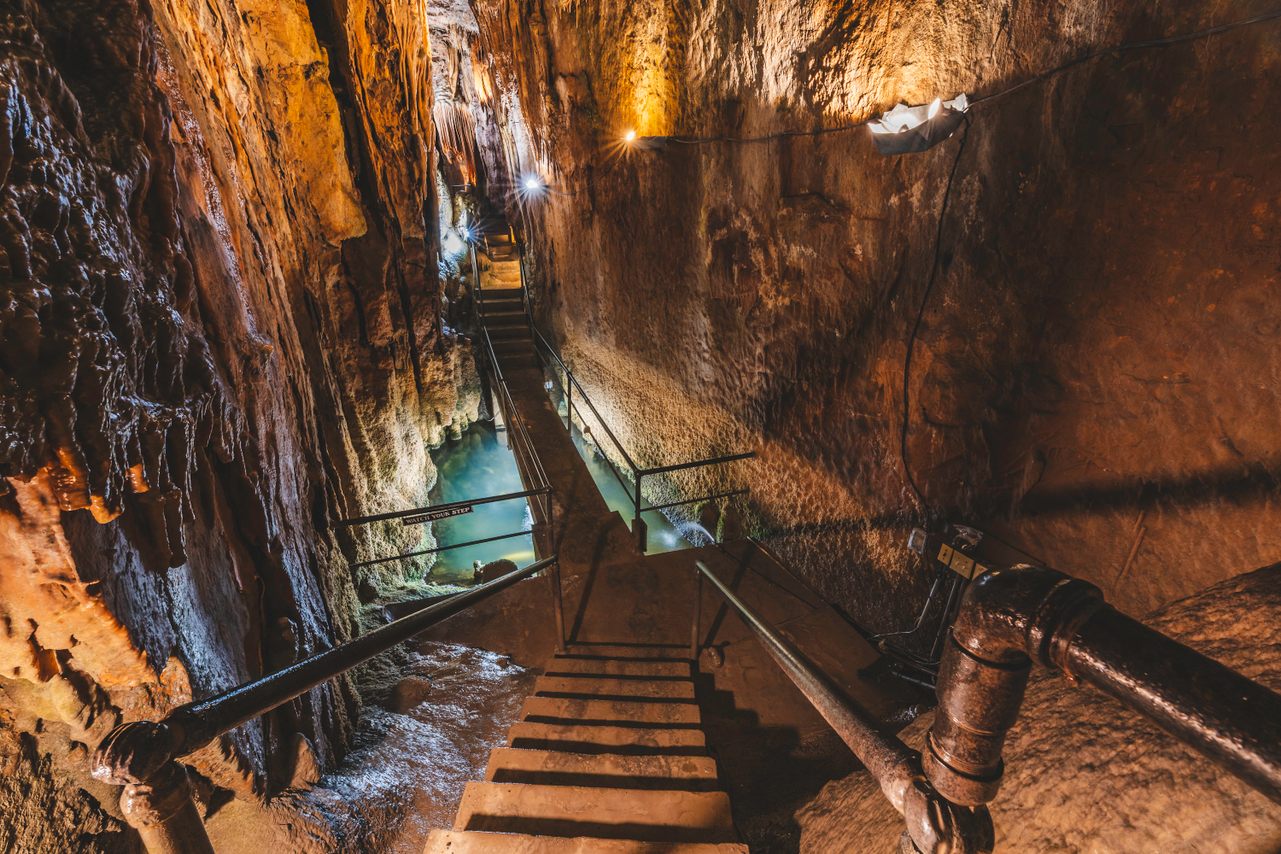
2. Smoke Hole Caverns
Explore an underground network of gasp-worthy formations at Smoke Hole Caverns, near Cabins. Used by Indigenous Seneca people to smoke wild game, Smoke Hole gets its name from the early settlers who would often witness the smoke swirling up from the ground. Inside, you’ll find a mega-marvel, 6-ton ribbon stalagmite and the second-highest cavern ceiling in the United States, rising 274 feet. In later years, settlers used the secluded site to make moonshine. As many as 20 stills were thought to be in operation at one time, and one remains on display today.
8290 N. Fork Highway, Cabins, West Virginia 26855
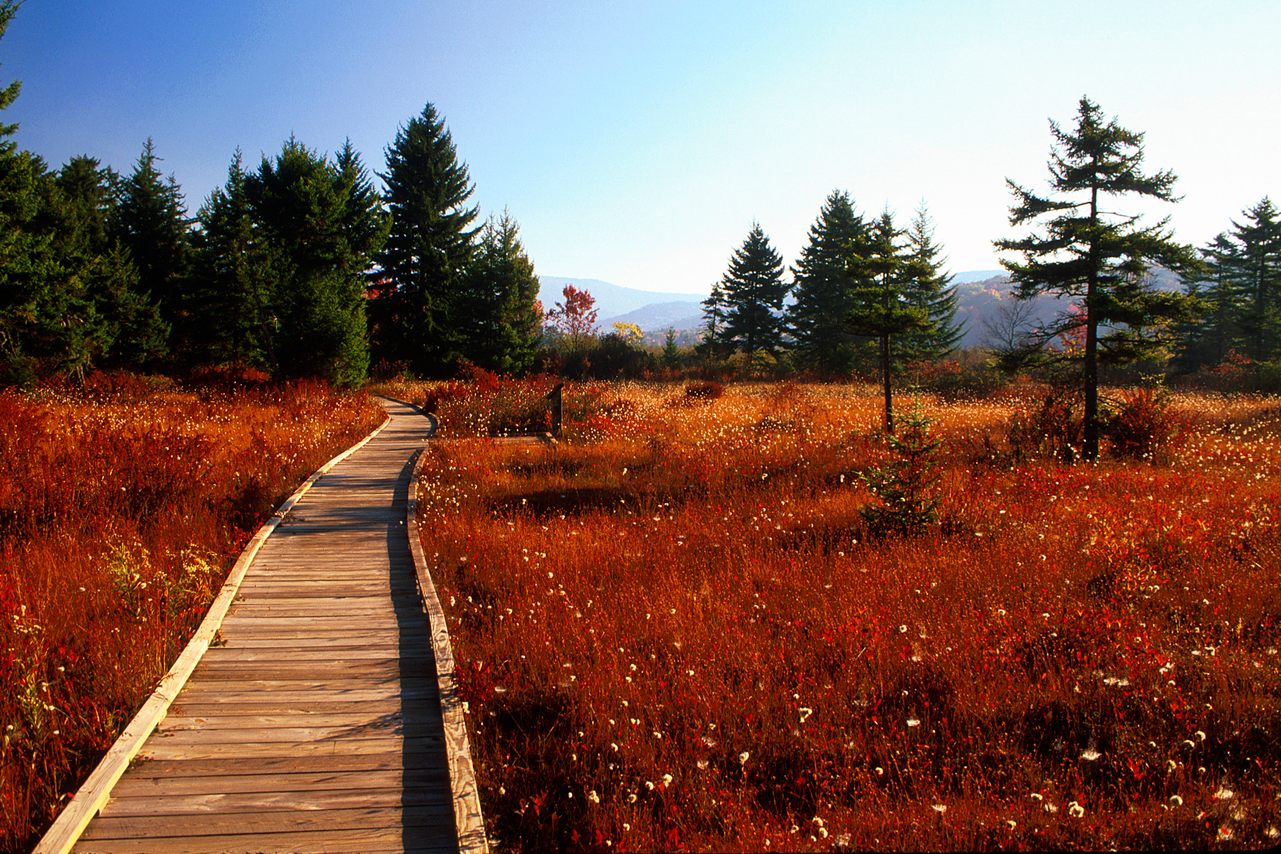
3. Cranberry Glades Botanical Area
The Cranberry Glades Botanical Area, in the Monongahela National Forest of eastern West Virginia, is not only an idyllic spot for nature and outdoor enthusiasts, it is one of the most botanically significant areas in the Appalachians. More akin to the qualities of Canada’s arctic tundra than that of the mid-Atlantic United States, the bog is formed partially of decayed plants, or peat, leaving the ground spongy underfoot. The area is also home to some seriously fascinating flora: carnivorous pitcher plants. Also called pitfall plants, these tricksters lure their winged prey with nectar—and then drown them in it. Stroll along the half-mile boardwalk or link up with roughly a dozen hiking trails.
Hillsboro, West Virginia 24946
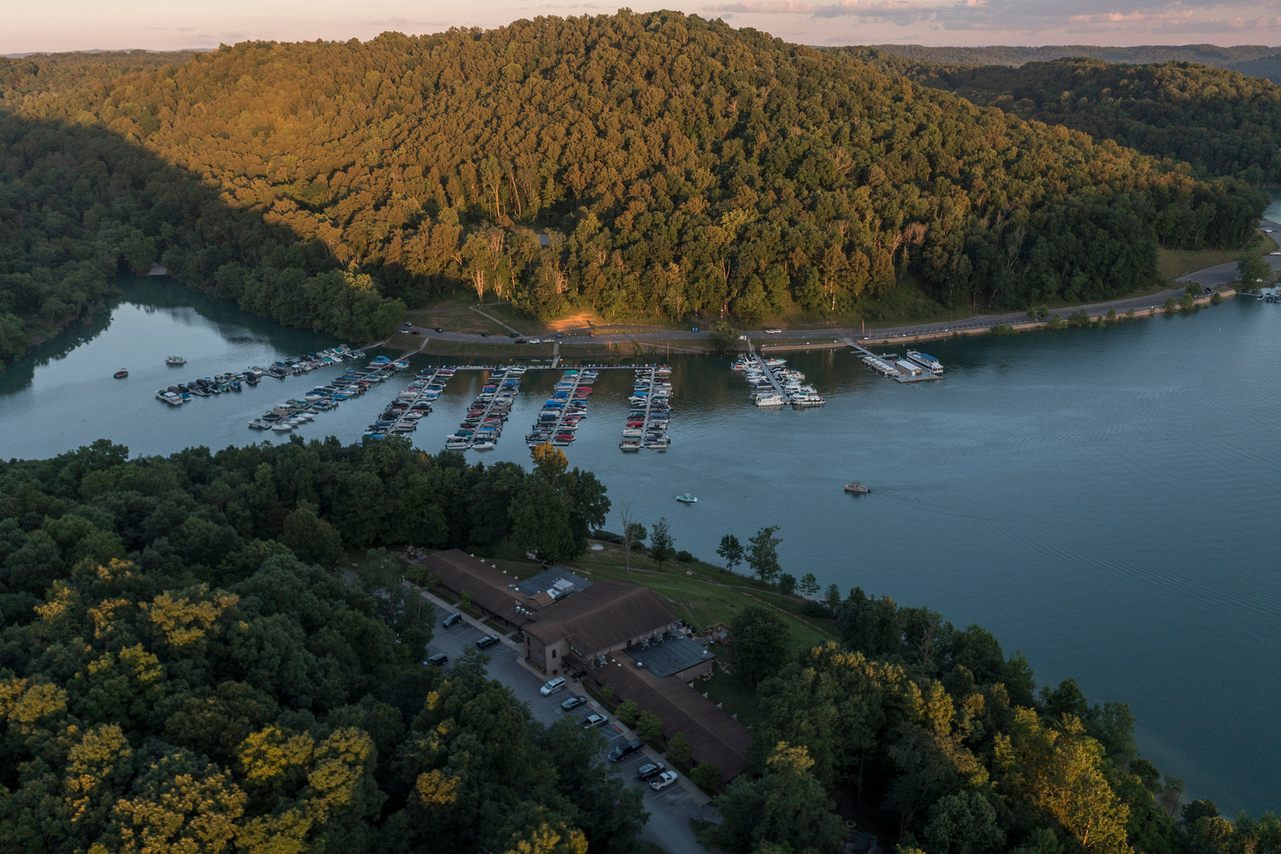
4. Tygart Lake
Located in picturesque north-central West Virginia, Tygart Lake is a 10-mile long recreational reservoir surrounded by the Allegheny Mountains. Just south of Grafton, the lake offers stunning views, wildlife sightings from deer to ducks, and clear water that’s ideal for bass fishing, boating, swimming, and even scuba diving. Henderson’s Rocks gives divers an up-close look at unusual underwater cliffs and rock formations. Hikers can lace up and hit the forested Dogwood Trail or opt for the Ridge Trail, a popular route for spotting wildlife. Visit the Nature Center at Tygart Lake State Park for an overview of the diverse wildlife found in the park, and for some of the best views, head to the Tygart Dam overlook and relax on the Almost Heaven swing. Lodging, campsites, and cabins are also available.
1240 Paul E. Malone Road, Grafton, West Virginia, 26354

5. Thorny Mountain Fire Tower
Tucked away in the rugged wilderness of Seneca State Forest, the Thorny Mountain Fire Tower is one of West Virginia’s most unique, and highly sought after, accommodations. A stay here means true immersion in nature, with no electricity, running water, or, gasp, internet. The tower was built by the Civilian Conservation Corps, a New Deal program established to create jobs following the Great Depression. Rising 65 feet high, the tower has two cots and offers sweeping panoramas by day and unobstructed views of the sparkling night sky. Available between May and October, but tends to book up in advance.
Dunmore, West Virginia 24934
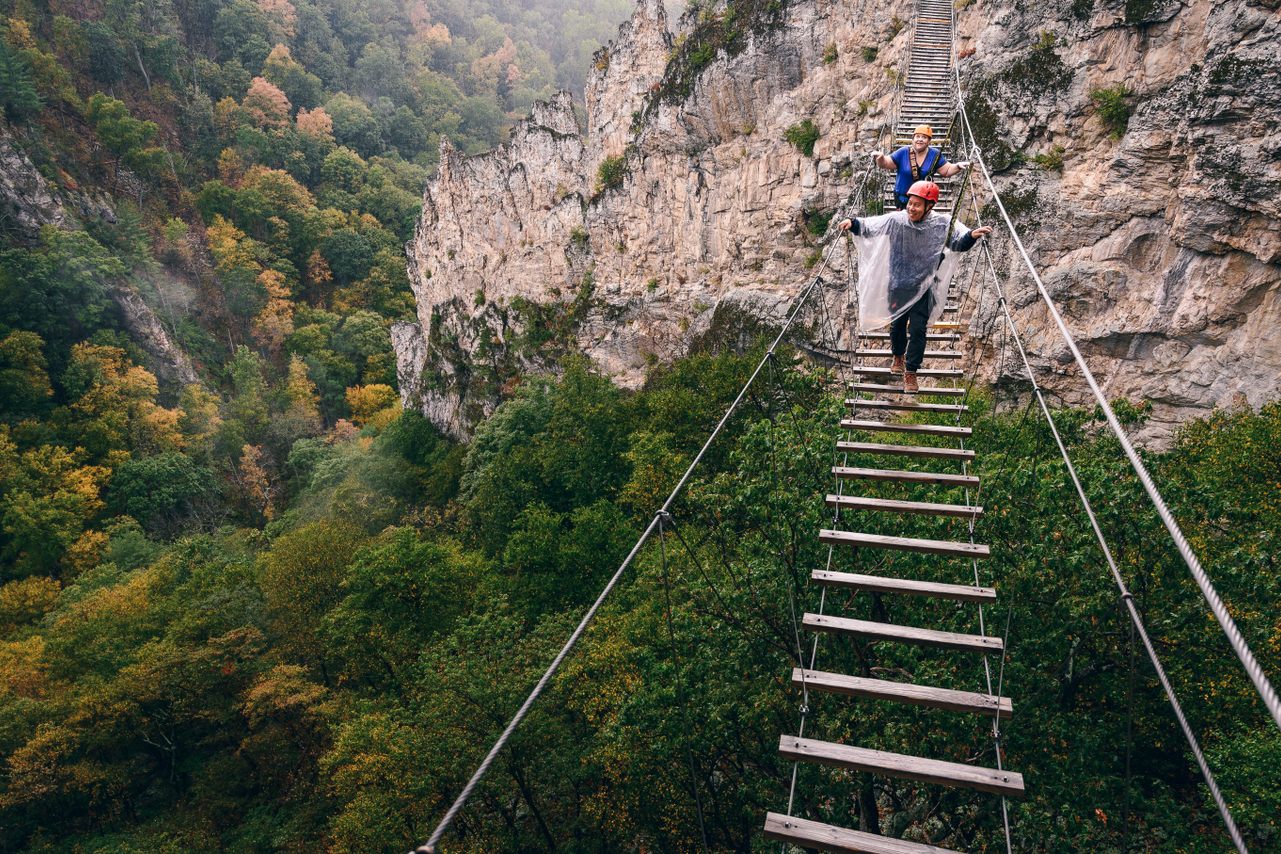
6. Nelson Rocks Via Ferrata
If you’re afraid of heights, take a deep breath before you read on. Italian for “by way of the iron,” a via ferrata is an intricate system of steel rungs and cables that allows climbers a path up and over mountainous terrains. In West Virginia, Nelson Rocks, known for their two ultra-steep ridges, rise out of the lush Monongahela National Forest below. The Nelson Rocks Via Ferrata is a privately owned adventure destination, and one of the only of its kind on the east coast. But it’s not for the faint of heart: Those that are bold enough to go for it gain over 1,000 feet in elevation and scramble across a 200-foot suspension bridge.
141 Nelson Gap Road, Circleville, West Virginia 26804

7. Spruce Knob
The highest peak in West Virginia, rising 4,863 feet, Spruce Knob is no slouch when it comes to spectacular views. From the observation tower, take in awe-inspiring panoramas as far as the eye can see. Grassy clearings blend with dense, forested ridges and low-lying blueberry and huckleberry plants in this diverse and interesting natural landscape. Up this high, it’s not exactly an easy habitat: Raging westerly winds have taken a toll on the area’s red spruce trees, now reduced to just one side. Head out along the half-mile Whispering Spruce Trail for other worthy views and wildlife sightings. Birders might even catch a glimpse of a bald eagle.
Riverton, West Virginia 26814
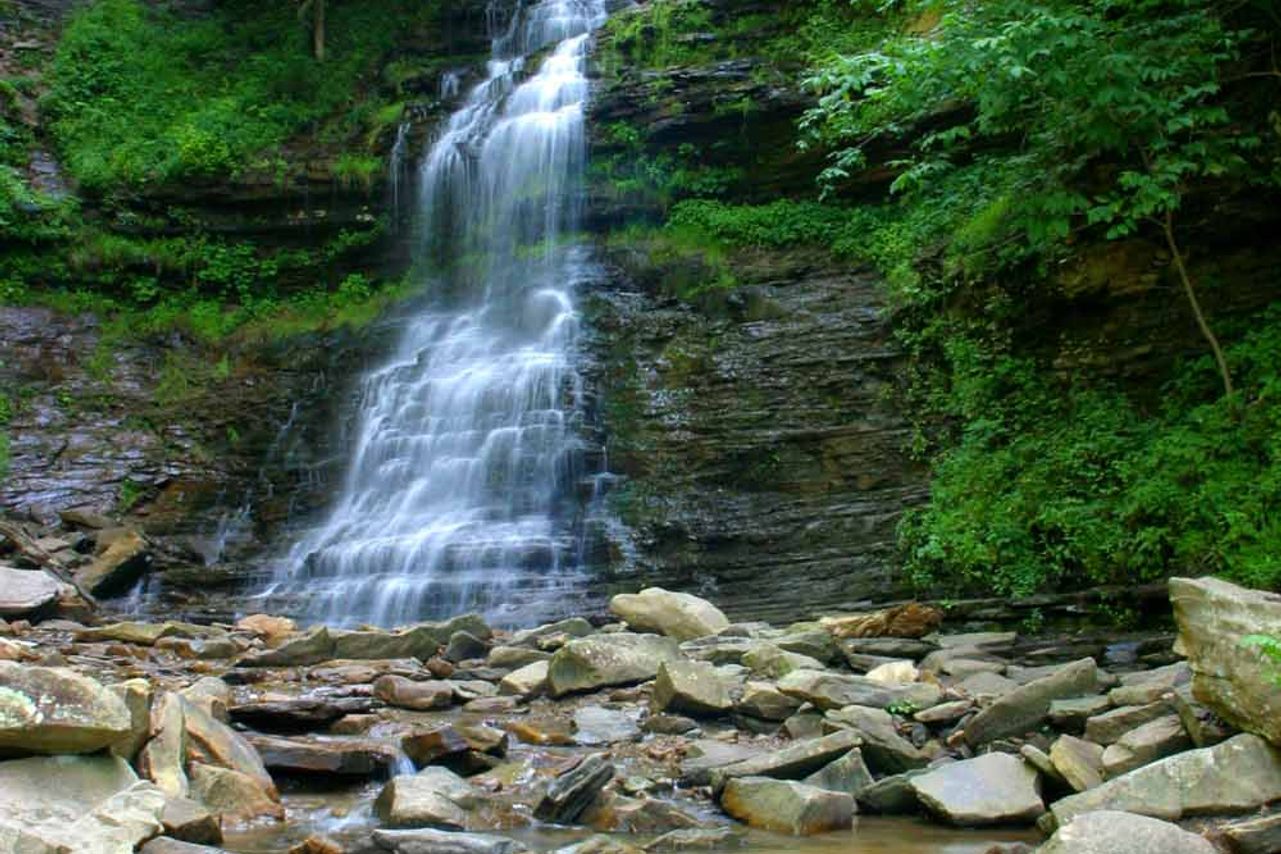
8. Cathedral Falls
Located in the New River Gorge National Park near Gauley Bridge, Cane Creek rushes over a rocky ridge of shale and sandstone to form a stunning, 60-foot cascade at Cathedral Falls. Not only is this a natural marvel, but it’s easy to access off Route 60. A short foot bridge brings you so close you can splash in the water. The surrounding area is lush and verdant in spring and summer, and full of showstopping colors in fall. Seek out other falls along the West Virginia Waterfall Trail, a mobile passport and waterfall trip planner.
Gauley Bridge, West Virginia 25085
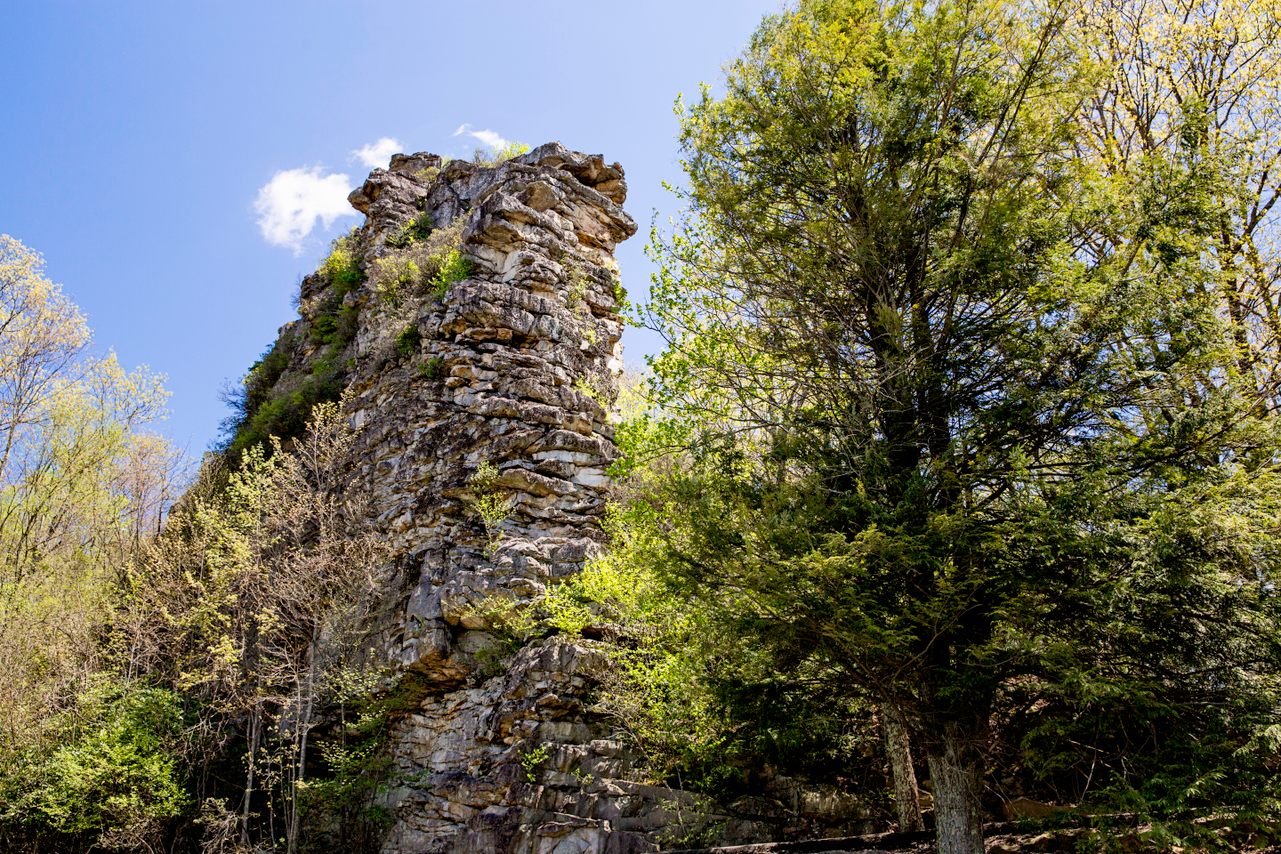
9. Pinnacle Rock
The Pinnacle Rock State Park gets its name from a sandstone formation that rises a whopping 3,100 feet tall, providing excellent views of the local landscape and a prime spot for photos. The park includes a forested area where visitors can partake in various outdoor activities, such as hiking, fishing, and picnicking.
6470 Coal Heritage Rd, Bramwell, WV 24715
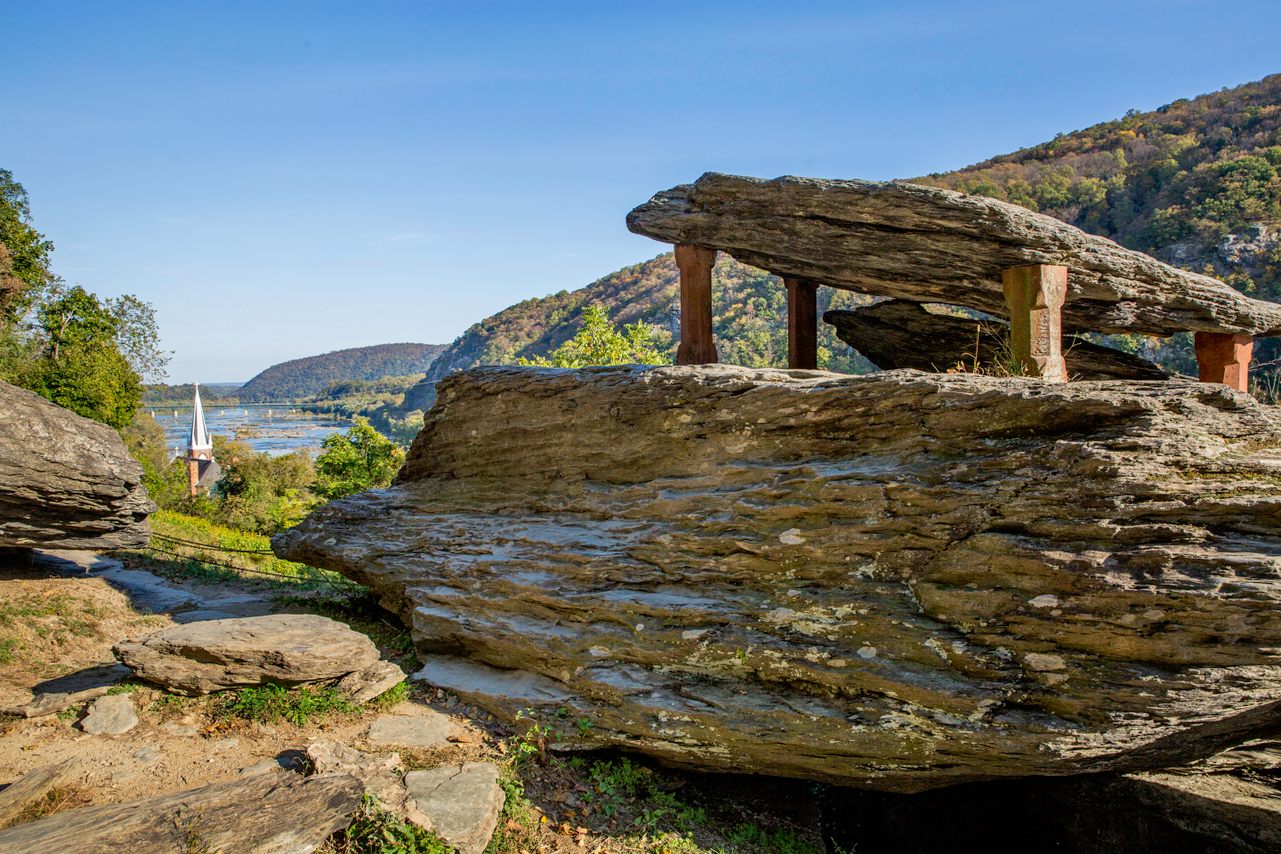
10. Jefferson Rock
Harpers Ferry may be best known for John Brown’s raid, but it’s also home to a special spot along the Appalachian Trail. Jefferson Rock is a natural shale formation located in Harpers Ferry National Historical Park, which spans three states. From the rock’s location, you’ll find incredible views of the surrounding mountains and the confluence of the Potomac and Shenandoah rivers below. The area is home to at least 30 mammal species—serious props if you spot the rare American mink or short-tailed shrew, but deer, foxes, and squirrels are common sightings. The surrounding park also protects nesting peregrine falcons. Note: Jefferson Rock itself is an unstable structure, so climbing on it is prohibited by the National Park Service.
Harpers Ferry, West Virginia 25425
Sponsored by West Virginia Department of Tourism.


